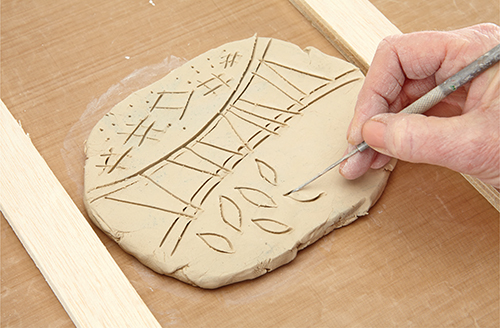
Create monoprints without the hassles of cleanup and a printing press with an affordable, groutless white clay from a ceramic or clay studio. It’s as simple as rolling out your clay and making marks in it using a knife, pencil or clay tools. Working on wet clay, add your paint, then pull a print using paper, fabric or wallpaper. Your marks/painting will be flipped when printed. Practice printing different kinds of marks before trying something complex.
Layer prints for fun or if the original print is dull or you just don’t like it. Different color layering, paint viscosity and brayer pressure will affect the print, so play around.

STEP 1: Roll out your clay until it is 1⁄4"–1⁄2" (6mm–13mm) thick. Carve a design into the clay. Trim for straight edges if desired.
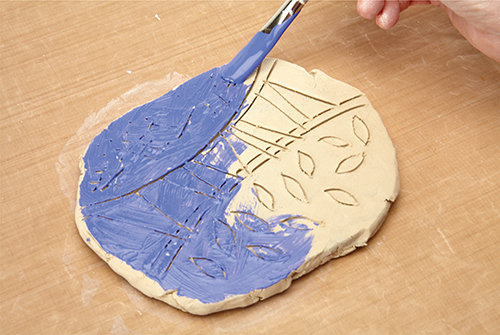
STEP 2: Apply paint to the higher areas as this is what prints.
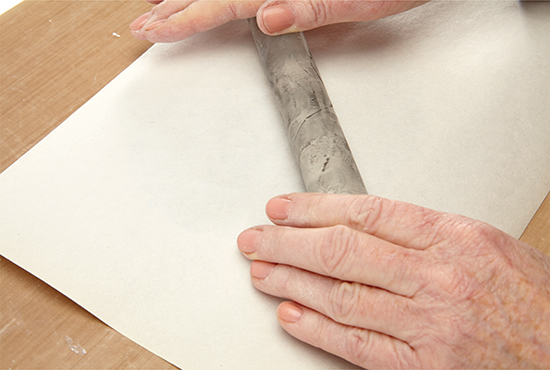
STEP 3: Layer your paper over your clay and roll a brayer or roller to get a good print.
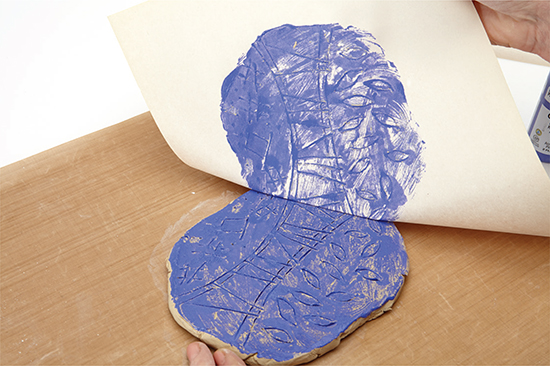
STEP 4: Remove the paper by gently pulling it off the clay.
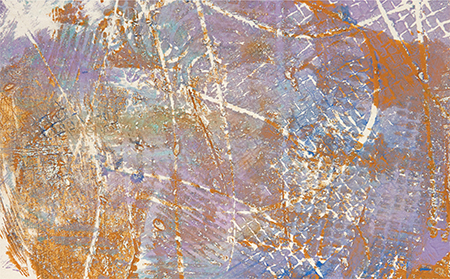
Paper that has three layers of printing on it.
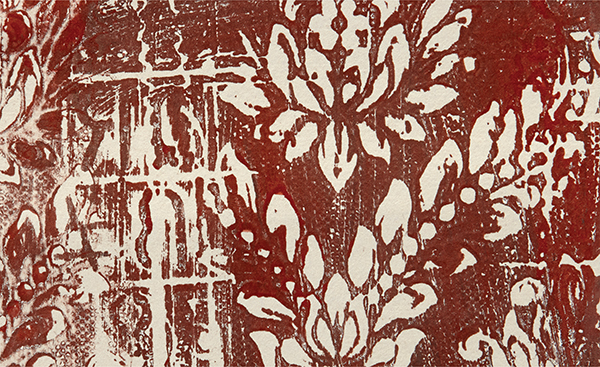
Wallpaper stamped into clay. The high points in the clay are painted and then the clay is printed.
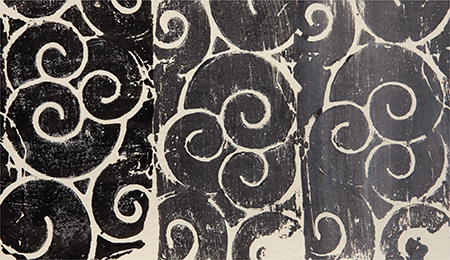
Each time you print the clay, it flattens the design. Notice the line quality change here.
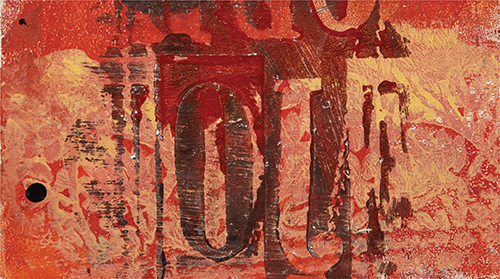
Layered prints on painted paper.
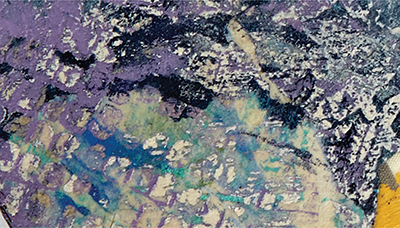
Multiple prints overlapping.
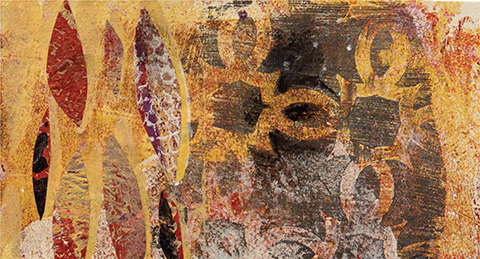
Cut up monoprint collaged on top of another monoprint.
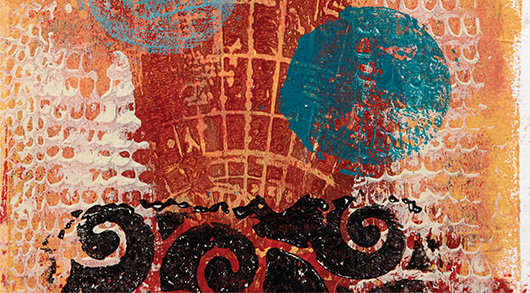
Stamp on clay plate and stamp on finished art.
Moist clay may stick to your print along with the paint. If this happens, either let it dry and then brush the dried clay off, or coat it with polymer medium matte if you want to keep it on your surface. This only works with small amounts of clay, not big chunks. If you let your clay get leather hard (stiffened but still slightly damp), the clay won’t stick to the print, but the clay will not be reusable in the future.
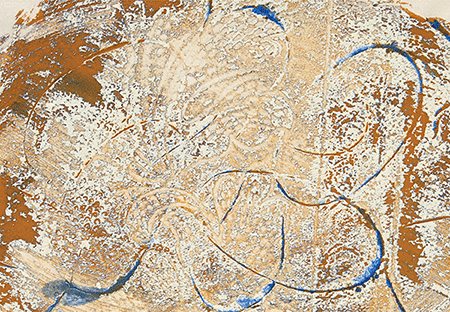
Unless you want to use oil-based paints, which are another animal altogether, with this technique, try Open acrylics by Golden, which have a longer drying time than regular acrylics. Carve a design into 1⁄2" (13mm) leather-hard clay (clay that has stiffened but is still slightly damp). Roll on your paint, lay your paper over it and brayer, then pull off your print. You may want to do some test prints first to get the feel of the paint viscosity and the paper.
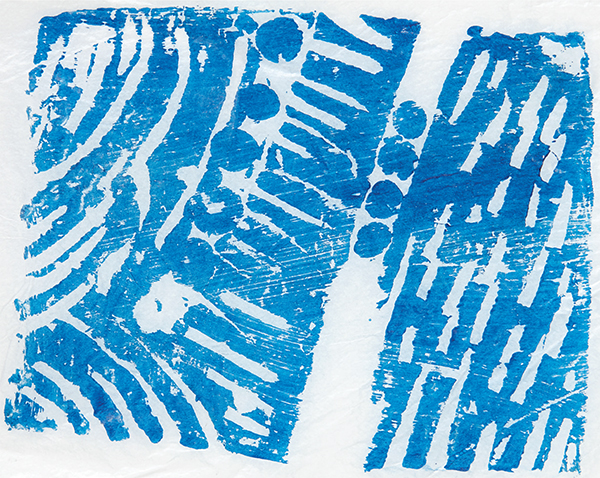
Faux woodcuts can be printed on paper or fabric.
Monoprints can become a patterned paper to collage onto your art to create a textured art element or as a recognizable but stylized cutout. Make a number of patterned backgrounds ahead of time and have them available to you when you need something wonderful to collage on your art.
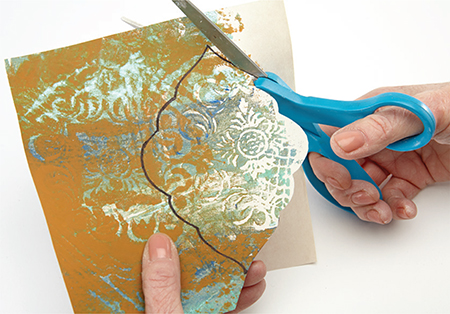
Draw or trace a shape on your monoprint and cut.

Apply with soft gel to art for patterned elements.
You can end up with a finished monoprint, or you can keep adding to the piece with stencilling, glazing, drips and collage.
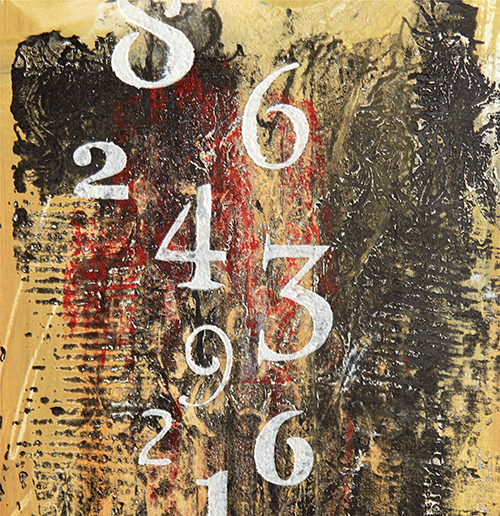
Add raised stencilling with coarse molding paste.
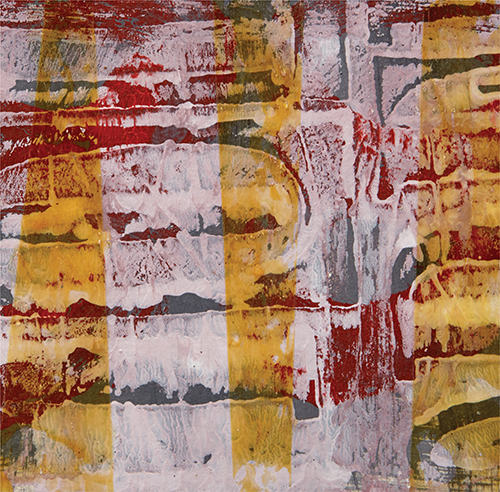
Apply stripes of tinted glaze.